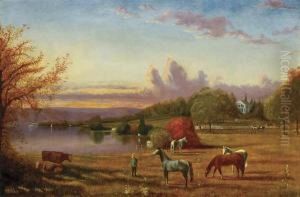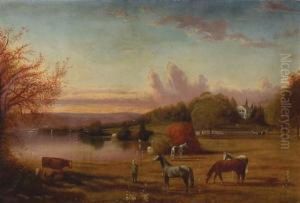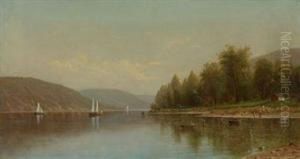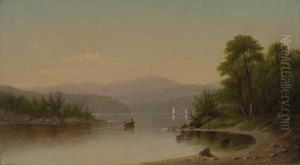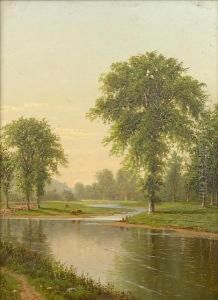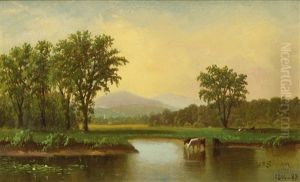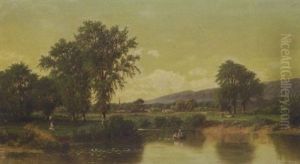Henry Suydam Paintings
Henry Suydam was an American artist, primarily known for his landscape paintings. Born in 1803, Suydam's early life and upbringing remain relatively obscure in the historical record, with little information available regarding his initial exposure to the arts or his formative years. What is known is that he became active as a painter in the early to mid-19th century, a time when the United States was developing its own distinct artistic identity separate from European influences.
Suydam's works are often categorized within the Hudson River School, a mid-19th century American art movement that was inspired by romanticism. The artists of this school were characterized by their realistic and detailed portrayals of the American landscape, emphasizing its beauty and grandeur. While Suydam was not as prominent as some of his contemporaries, such as Thomas Cole or Frederic Edwin Church, he contributed to the movement with his serene depictions of the northeastern United States.
Henry Suydam's paintings typically featured pastoral scenes, tranquil bodies of water, and soft, luminous skies. His approach to landscape painting was subtle and imbued with a sense of calm, focusing on harmonious compositions and a gentle palette. Though he did not achieve the same level of fame as some of his peers, his work was appreciated for its quiet beauty and technical skill.
Little is known about Suydam's personal life or professional training, and he did not leave behind the same volume of work or written records as other artists of his time. His death in 1865 marked the end of his modest contribution to the art world, but his paintings continue to be appreciated by art historians and collectors who are interested in the Hudson River School and American landscape painting of the 19th century.
Overall, Henry Suydam's legacy lies in the gentle, reflective landscapes that capture the tranquil essence of nature. While not a major figure in the art historical canon, his work remains a testament to the enduring appeal of the American landscape and the artistic movements that sought to immortalize it during the 19th century.
